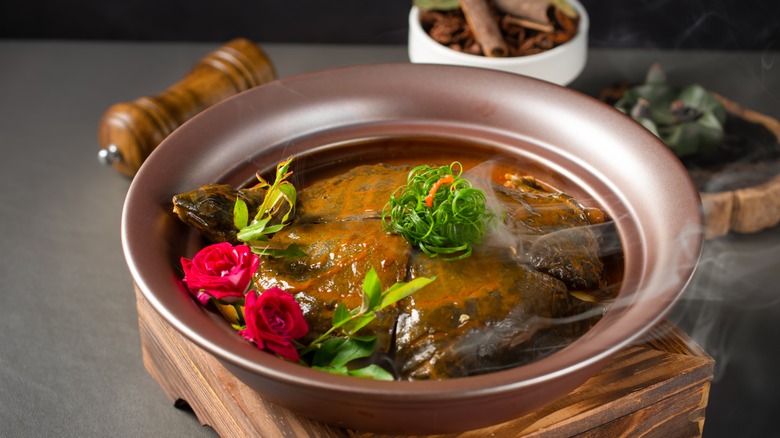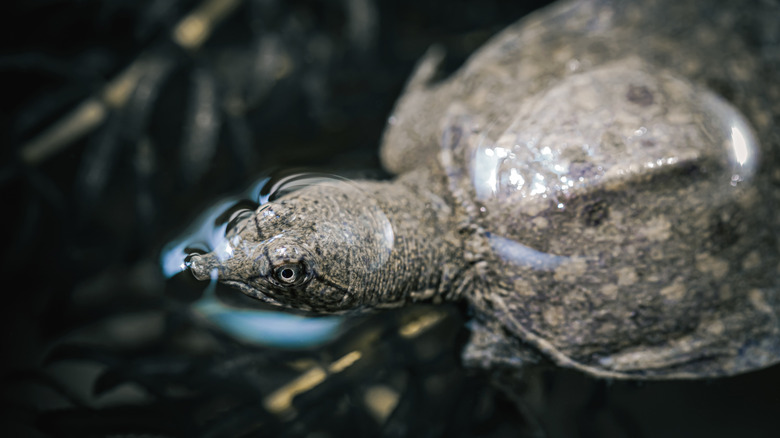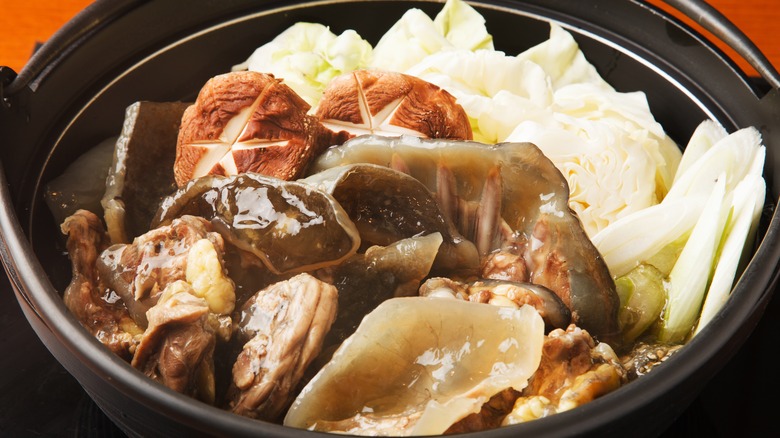Steamed Softshell Turtle Is A No-Waste Delicacy
In the rich tapestry of Chinese culinary traditions, few elements stand out as uniquely as the practice of consuming softshell turtles. This millennia-old delicacy has played a significant role in Chinese culture, both historically and in modern times. Said to be beneficial to your health according to traditional Chinese medicine, consuming turtles is common practice in Jiangsu Province, just north of Shanghai.
Consuming turtles has a long and storied history that stretches all the way back to the Zhou Dynasty, which ruled China between 12th and third century B.C.E., during which the turtle was considered a delicacy for the nobility. By the fifth century C.E., the softshell turtle was considered a medicinal food, and there's evidence of recipes that combined softshell turtle, lamb, onions, bean paste, rice, ginger, magnolia, and wine into a broth. More than five centuries later, another source from the Song Dynasty mentioned capturing giant softshell turtles for food in lakes and rivers of the empire, alongside pickling turtle eggs.
Chinese softshell turtles today
Today, you will find softshell turtles available from many markets in China, in cities as far south as Hong Kong. In China alone, more than 340,000 tons of turtles were consumed in 2018. To meet demand and to prevent the species from going extinct, large farms have been established to breed softshell turtles for food in China. Aside from a thin exterior membrane that needs to be removed, most parts of the animal are edible, including part of the shell.
In China, common ways to enjoy softshell turtles include steaming them whole, creating a soup with Chinese medicinal herbs, and stir frying. It can be paired with other proteins such as pork belly. The taste of softshell turtle meat is said to be mild, similar to chicken. The meat and the shell are surrounded by a layer of gelatinous skin, which is believed to improve the collagen of your skin. As such, it is a very popular dish for women who believe eating softshell turtles will preserve their youthful looks.
Softshell turtles outside of China
Although China is one of the largest consumers of softshell turtles, the practice of consuming them is not limited to China alone. In Japan, where softshell is called suppon, it is usually served as a hot pot (nabe). Meanwhile, in Singapore, softshell turtles can be served as a curry, a dish that represents the fusion of the diverse cultures native to the tiny nation.
Also, the consumption of turtles is not limited to Asia. In fact, Europeans and Americans used to consume plenty of turtles, a practice they learned from native Caribbean populations during the age of colonialism and exploration. Since turtles can be kept alive on ships, they became a food source for sailors before eventually being introduced to Europe, where it was elevated to food for the rich and the noble.
The turtle soup craze spread from Britain to the United States, where the soup was served during the first Independence Day celebrations. Turtle soup made with Caribbean turtles continued to be available until 1973 when it was eventually outlawed due to the endangered status of turtles. However, you can still find this rare delicacy in some restaurants such as Brennan's in New Orleans.



